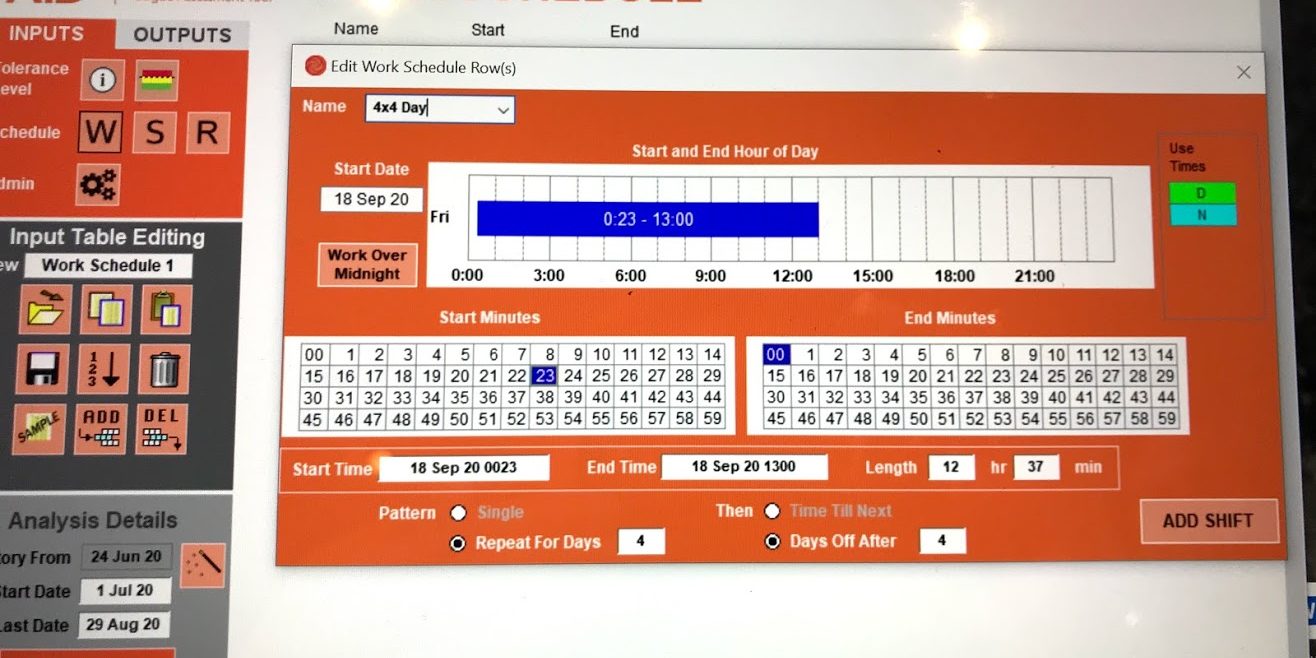Finding the best roster to fit your organisation can be tricky. Typically managers hope for a lean roster, staff want time off whilst health and safety professionals want a fatigue safe roster. Common questions are; how long should the shift be, should a roster pattern rotate backwards or forwards, if doing 12 hour shifts should you do nights first or days first and how do you know if the roster is safe?
To answer some of these questions it is helpful to understand key facts about the science of sleep and fatigue, how the body clock works and the implications roster design has on the quality and quantity of sleep.
What is Sleep and Why do We need it?
Sleep keeps us healthy and functioning well. It lets your body and brain repair, restore, and re-energize. If you don’t get enough sleep, you are likely to experience poor memory and focus, weakened immunity, and mood changes. Most adults need 7 to 9 hours of sleep each night. There is no doubt that a good roster is one that allows time for recovery sleep.
How The Body Clock Works (circadian biological clock.)
Most people notice that they naturally experience different levels of sleepiness and alertness throughout the day. This is due to two body systems: sleep/wake homeostasis and the circadian biological clock.
Our internal circadian biological clocks, on the other hand, regulate the timing of periods of sleepiness and wakefulness throughout the day. The circadian rhythm dips and rises at different times of the day, so adults’ strongest sleep drive generally occurs between 2:00-4:00 am and in the afternoon between 1:00-3:00 pm,
The sleepiness we experience during these circadian dips will be less intense if we have had sufficient sleep, and more intense when we are sleep deprived. The circadian rhythm also causes us to feel more alert at certain points of the day,
So What is The Problem with Shiftwork?
When it comes to shiftwork, the problem is we are trying to sleep and work at times that are not aligned with those natural patterns. This makes it a challenge when we are trying to function optimally at times when our body is naturally sleepy – and to get good quality sleep when our body is naturally programmed to be alert.
Research indicates that even when we work permanent nights, our body clock shifts only slightly and most people do not become fully adapted to night work – probably because on their days off they revert to day time function.
Five steps to designing a roster that is good for staff and good for business.
The perfect roster is one that best balances the business needs of the organisation with health and safety requirements and personal preferences. In order to achieve this Shiftwork Services recommends:
- A risk assessment to determine fatigue tolerance – the higher the task risk the lower the fatigue tolerance needs to be.
- Staff survey to find out individual preferences, this will often be influenced by family responsibilities, voluntary work and hobbies. Careful consideration of staff needs will likely have a significant positive impact on the success of any chosen roster.
- Management report about the business needs. This needs to include information about operating hours, staffing levels and skills mix.
- Teach staff and managers how to assess roster patterns for fatigue risk. Shiftwork Services uses FAID Quantum software which offers highly accurate sleep-wake prediction with outputs in both sleep and fatigue scales.
- Invite staff to propose a roster based on the above data. Rosters need to be piloted for several months and a formal review date set. The review needs to consider any changes in accidents and incidents, staff satisfaction and productivity.
If you would like an objective opinion of your roster or scientific assessment of hours of work – contact fiona@shiftwork.co.nz with the words ROSTER REVIEW in the subject line.


